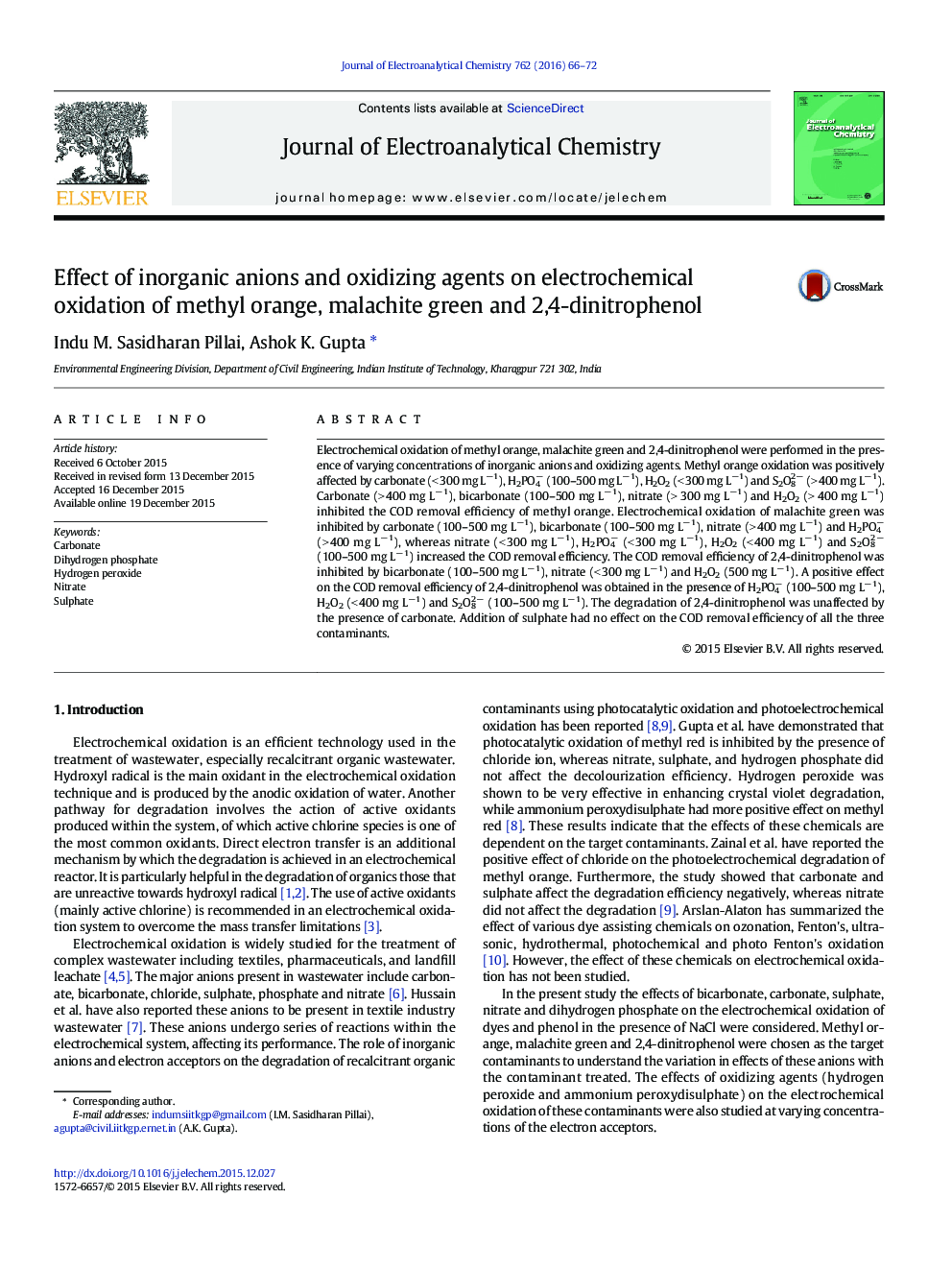| Article ID | Journal | Published Year | Pages | File Type |
|---|---|---|---|---|
| 218096 | Journal of Electroanalytical Chemistry | 2016 | 7 Pages |
•CO32−, HCO3− and NO3− inhibited oxidation of contaminants at higher concentrations.•H2PO4− had a positive effect on the oxidation and SO42− did not have marked effect.•H2O2 had positive effect on the oxidation at low concentration and vice versa.•Ammonium persulphate had neutral/positive effect on the degradation.
Electrochemical oxidation of methyl orange, malachite green and 2,4-dinitrophenol were performed in the presence of varying concentrations of inorganic anions and oxidizing agents. Methyl orange oxidation was positively affected by carbonate (< 300 mg L−1), H2PO4− (100–500 mg L−1), H2O2 (< 300 mg L−1) and S2O82− (> 400 mg L−1). Carbonate (> 400 mg L− 1), bicarbonate (100–500 mg L−1), nitrate (> 300 mg L−1) and H2O2 (> 400 mg L−1) inhibited the COD removal efficiency of methyl orange. Electrochemical oxidation of malachite green was inhibited by carbonate (100–500 mg L−1), bicarbonate (100–500 mg L−1), nitrate (> 400 mg L−1) and H2PO4− (> 400 mg L−1), whereas nitrate (< 300 mg L−1), H2PO4− (< 300 mg L−1), H2O2 (< 400 mg L−1) and S2O82 − (100–500 mg L− 1) increased the COD removal efficiency. The COD removal efficiency of 2,4-dinitrophenol was inhibited by bicarbonate (100–500 mg L−1), nitrate (< 300 mg L−1) and H2O2 (500 mg L− 1). A positive effect on the COD removal efficiency of 2,4-dinitrophenol was obtained in the presence of H2PO4− (100–500 mg L−1), H2O2 (< 400 mg L−1) and S2O82 − (100–500 mg L−1). The degradation of 2,4-dinitrophenol was unaffected by the presence of carbonate. Addition of sulphate had no effect on the COD removal efficiency of all the three contaminants.
Graphical abstractFigure optionsDownload full-size imageDownload as PowerPoint slide
